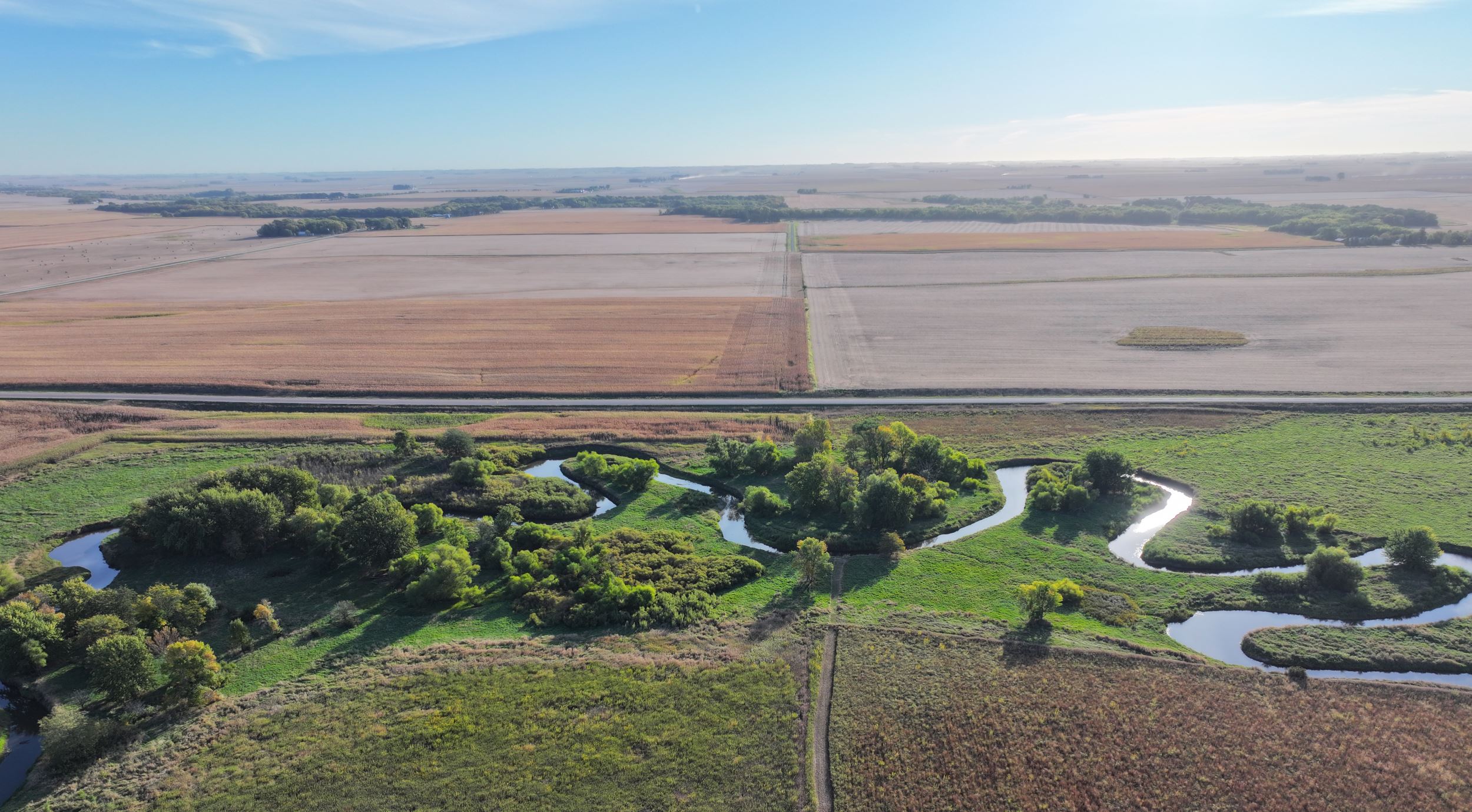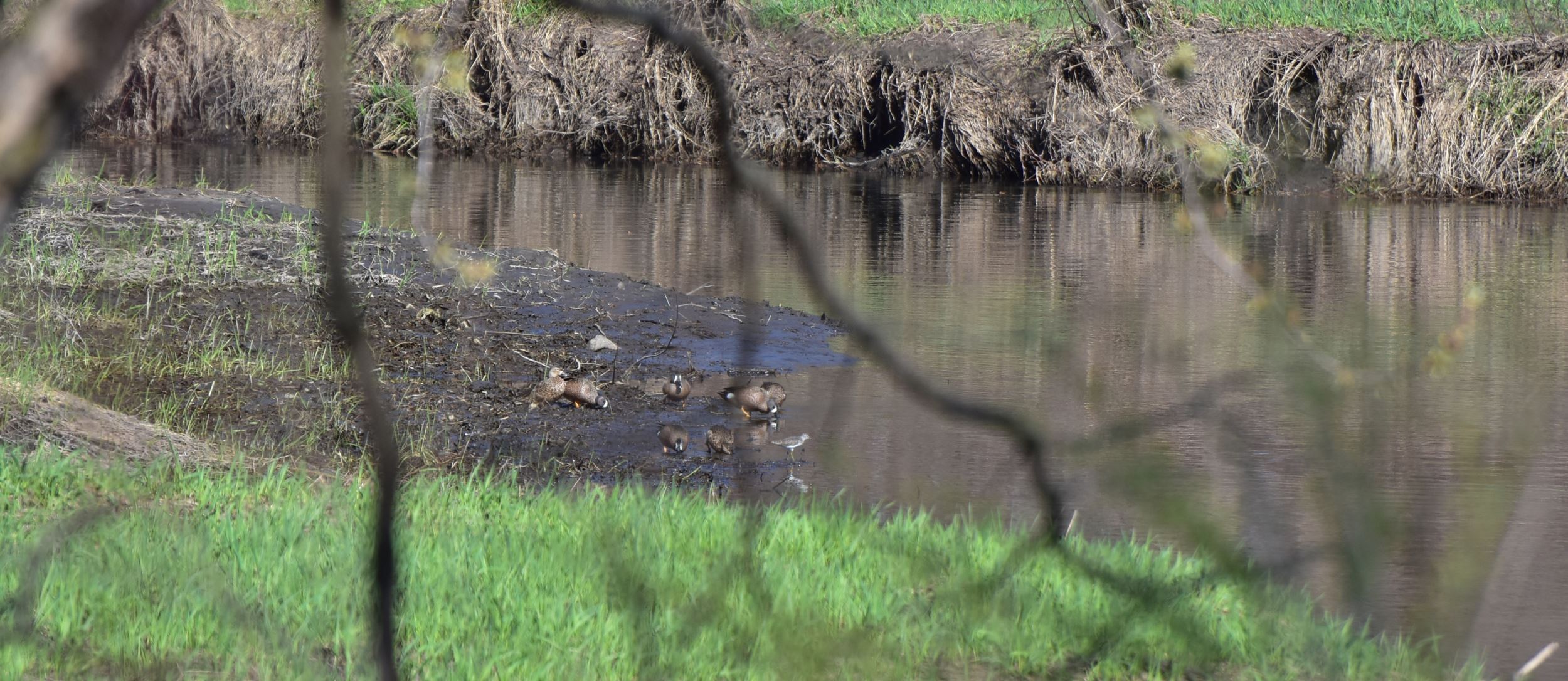Preserving Boone Valley
By Clara Wodny on April 14, 2025 in Blog

Photo by Ross Baxter, INHF
Humboldt County in north central Iowa is not known for an abundance of public land. But, thanks to the combined dedication of individuals and organizations committed to protecting and restoring Iowa’s natural spaces, that is changing.
Enter: Boone Valley Wildlife Area, a newly-opened public hunting, recreation and wildlife area that holds just as many opportunities for valuable conservation and restoration as it does public enjoyment.
Spanning over 1 mile and 390 acres, the property’s unique features include a natural, winding tract of Prairie Creek — a stream that flows into the Boone River. One of Humboldt County’s greatest natural assets, its direct relationship with the Boone River means that Prairie Creek plays an instrumental role in the area’s water quality. Protecting and restoring the riverbank and surrounding land to its native vegetation reduces sediment and runoff that would otherwise flow into Prairie Creek and, eventually, be deposited into the Boone River.
This portion of Prairie Creek has never been artificially straightened, allowing for natural course changes and providing unique conservation benefits and valuable habitat. Since the beginning of agricultural development in the Midwest, river and stream straightening has often been used to make waterways flow more quickly and efficiently. Taking out the wiggle and reducing the waterway’s surface area increases the amount of usable agricultural land but also has negative consequences on the local ecology. Because straightened rivers and streams flow faster, many species can no longer use them as spawning grounds, more sediment is picked up and transferred to places where it doesn’t belong, and flooding becomes a greater problem.
A change in the waterway’s course, whether occurring naturally or artificially, often results in the creation of oxbows — curves or meanders of a creek that gradually become cut off from the main flow of water. Over time, erosion will lead to the oxbow filling with sediment and drying up, requiring restoration to maximize ecological benefits.
Humboldt County Conservation Board (HCCB) partnered with INHF, the Iowa Soybean Association and the Nature Conservancy to complete multiple oxbow restorations at Boone Valley Wildlife Area. These newly revitalized oxbows contribute to the maintenance of Prairie Creek’s water quality by filtering sediment and nutrients out of the water before it flows back into the nearby creek and eventually deposits in the Boone River. They are also extremely valuable in terms of aquatic wildlife habitat, especially for small fish who need protection from larger predators. The oxbows at Boone Valley have been known to foster several species, including rare Topeka Shiners, a federally endangered fish species.
Another project on the property saw the restoration of 12 wetland basins around the creek, addressing issues related to both water quality and quantity.
Now well underway to being restored to its original ecological state, the conservation of this expansive and unique piece of land has been a true group effort, made possible through the dedication and commitment of many.
The property was initially acquired by Iowa Natural Heritage Foundation (INHF) back in 2017. From the project’s inception, it was always intended that ownership and management would transfer to the Humboldt County Conservation Board (HCCB). At the time, HCCB only owned and managed around 400 total acres of public land, including just 200 acres of hunting ground, making this an exciting, but challenging, opportunity.
Todd Lee, director of HCCB, says the purchase price of 1.7 million dollars would not have been impossible for Humboldt County to do alone.
“This single property is almost twice as large as the total amount of public hunting land we managed at the time,” says Lee. “The prospect was quite daunting, but we were assured by INHF staff that they would help throughout the entire process, and everything would work out.”
 The winding oxbows of Prairie Creek house rare fish species, such as Topeka Shiners, and attract a wide variety of waterfowl. Photo by Ross Baxter, INHF
The winding oxbows of Prairie Creek house rare fish species, such as Topeka Shiners, and attract a wide variety of waterfowl. Photo by Ross Baxter, INHF
Despite the looming price tag and logistical challenges, the mission never faltered — the conservation value was simply too great. In addition to the creek and all the ecological benefits that its protection and restoration provides, the surrounding land has become a safe haven for a diverse range of wildlife, particularly migrating waterfowl. When the creek floods, it can produce up to 30 acres of additional water, attracting species such as Trumpeter Swans, White-fronted Geese, Mallards, Northern Pintails and Blue-winged Teal.
Over the course of nine years, the land was transferred to HCCB in three parcels, with the final transaction being completed in spring of 2025. The unique conservation value of this property caught the eye of many organizations in the area, including local chapters of Pheasants Forever and the National Wild Turkey Federation who have donated to all three phases. Additionally, the county received North American Wetlands Conservation Act (NAWCA) funding and Habitat Stamp grants for each of the phases. The combination of private fundraising used to leverage grant opportunities made it possible for HCCB to take on this monumental project.
“The highlight for me has been to watch the transformation of this property to an area of native grass and wetland,” says Lee.
The land’s location offers the public rare access to valuable wildlife habitat in an area where natural spaces and diverse ecosystems are not readily available.
“You feel immersed and ‘not in Iowa’ in this area,” says Heather Jobst, Senior Land Protection Facilitator at INHF. “Streams, like Prairie Creek, that haven’t been straightened or improved are exciting to see. You get a picture of how the whole system works.”
Now open to the public, Boone Valley Wildlife Area provides free access for bird watching, hiking, and hunting.